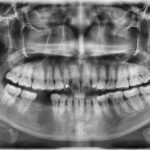Introduction
When it comes to SEO, we often think about external links, keywords, and content quality. However, there’s a powerful tool right within your website that can significantly impact your SEO: internal linking. You might be wondering, “What exactly is internal linking, and why should I care?” understanding Business to Inside, Let’s dive in and explore how optimizing your internal links can supercharge your SEO success!
What is Internal Linking?
Internal linking refers to the practice of linking to other pages within the same website. It’s like giving your visitors a roadmap, guiding them through your content and helping them discover more of what you have to offer.
Why Internal Linking Matters for SEO
- Improves Crawlability
- Search engines use bots to crawl your website. Internal links help these bots navigate through your pages, ensuring that all your content gets indexed.
- Enhances User Experience
- When visitors can easily find related content, they’re likely to stay longer on your site. This lower bounce rate sends positive signals to search engines.
- Distributes Page Authority
- Internal links can pass authority from one page to another, boosting the ranking potential of your most important pages.
- Increases Dwell Time
- By providing a path for users to explore more of your content, you increase the time they spend on your site—another factor that search engines consider.
Creating an Effective Internal Linking Strategy
1. Start with a Solid Content Structure
Before you dive into linking, ensure that your website has a clear and logical structure. Organize your content into categories and subcategories to make linking easier.
2. Use Descriptive Anchor Text
The clickable text in your links (anchor text) should be descriptive and relevant. Instead of using “click here,” opt for phrases that describe what the user will find, like “learn more about our SEO strategies.”
3. Link to Relevant Content
Only link to pages that are relevant to the content at hand. This relevance keeps users engaged and improves the chances of conversion.
4. Limit the Number of Internal Links per Page
While it’s tempting to link to as many pages as possible, keep it focused. Too many links can overwhelm users and dilute the authority you’re passing along.
Types of Internal Links
1. Navigation Links
These are links found in your website’s main menu and sidebar. They guide users to important pages like services, contact information, and blog sections.
2. Contextual Links
These links are embedded within the content and direct users to related articles or pages. For instance, linking a term to a definition or an in-depth article provides valuable context.
3. Footer Links
While less critical than navigation and contextual links, footer links can still help users find important content, like privacy policies or frequently asked questions.
Measuring the Impact of Internal Linking
1. Monitor Bounce Rates
Check how long users stay on your pages. A decrease in bounce rates after implementing internal linking can indicate that users are finding value in your additional content.
2. Analyze User Flow
Use tools like Google Analytics to see how users navigate your site. This can help you identify which internal links are driving traffic and which ones may need improvement.
3. Track Page Authority Changes
Regularly monitor your key pages’ rankings. You should see improvements as you optimize your internal linking strategy.
Common Mistakes to Avoid
- Overstuffing Links: Too many links can confuse readers and search engines.
- Ignoring Mobile Users: Ensure that your internal linking strategy is mobile-friendly.
- Neglecting Orphan Pages: Pages without any internal links can’t be easily discovered by search engines.
Conclusion
Optimizing your internal linking strategy can have a profound impact on your SEO success. By enhancing crawlability, improving user experience, and distributing authority throughout your site, you’ll set a solid foundation for achieving better search rankings. Start implementing these strategies today and watch your website flourish!
FAQs
- What is the ideal number of internal links per page? There’s no hard rule, but a good practice is to keep it between 3 to 10 relevant links.
- Can internal links improve my website’s ranking? Yes! They help search engines understand your site structure and can boost the ranking potential of linked pages.
- Should I use the same anchor text for internal links? No, using varied and descriptive anchor texts helps with context and improves user experience.
- How often should I update my internal links? Regularly review and update internal links, especially when you add new content or restructure your site.
- Is there a difference between internal and external links? Yes, internal links connect pages within the same domain, while external links direct users to different websites.











